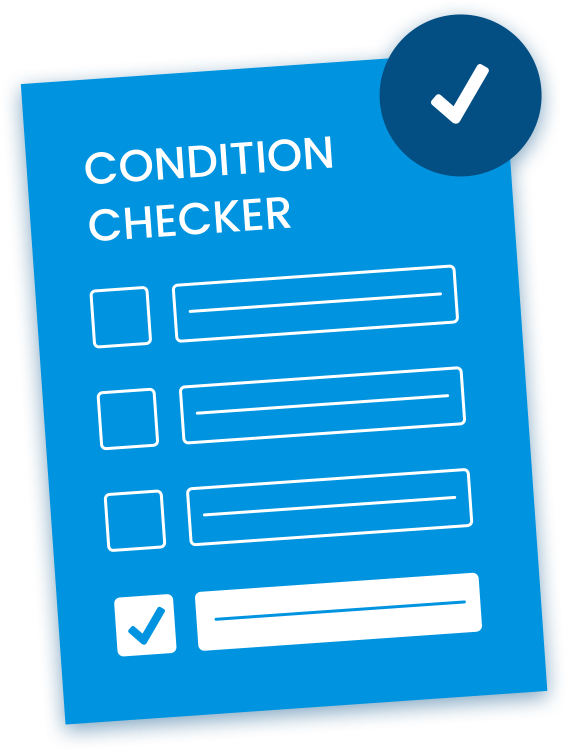Basal Joint Arthritis
Find out which possible conditions you may be suffering from by trying our 2-min Guided Pain Assessment Form!





Basal Joint Arthritis occurs when the cartilage that cushions the base of your thumb (aka, your “basal joint”) wears away.
Your basal—or carpometacarpal—joint connects the thumb to the wrist. Specifically, the saddle-shaped trapezium bone of the wrist and the metacarpal bone of the thumb create this specialized joint. Moreover, as opposed to the hinging action of the other fingers, the saddle-shaped trapezium permits a greater range of movement. This range of movement allows us to grasp objects and enables us to modify our grip strength. However, when this joint is compromised—especially by arthritis—it interrupts our ability to complete simple, everyday tasks. The effects of this can be rather distressing, as well as incredibly painful!
Basal Joint Arthritis is an extremely common condition. In fact, this disorder affects millions of individuals in the United States alone. Classified as a degenerative condition, arthritis attacks our joints, grinding down the protective cartilage that cushions our bones. As a consequence, inflammation, pain, and joint immobility often result.
Common Causes of Basal Joint Arthritis
Aging and overuse of the thumb joint are the primary causes of Basal Joint Arthritis. However, other risk factors for developing this condition include:
Additionally, engaging in activities that place strain on the thumb can accelerate or worsen Basal Joint Arthritis. A vast assortment of activities, hobbies, and occupations fall under this category. These activities may include:
…Just to name a few!
Unfortunately, because we constantly rely on our thumbs to complete a variety of daily activities, many of us are susceptible to Basal Joint Arthritis.

Find your condition with our 2-minute Condition Checker.
As with other forms of arthritis, the symptoms of Basal Joint Arthritis develop gradually and intensify with age. Depending upon the individual, the location and intensity of symptoms may vary.
If you are experiencing any of the following symptoms, you may have Basal Joint Arthritis:
Diagnosing Basal Joint Arthritis
If you are experiencing any of these symptoms, please visit a clinician to receive an official diagnosis. Your doctor should only require your medical history and a brief examination to arrive at a conclusion. However, your doctor may also prescribe an X-ray to obtain a clearer view of the joint. This imaging technique will allow your doctor to assess the degree of joint degradation, as well as to examine for the presence of bone spurs.
In addition, we should also note that Basal Joint Arthritis often co-occurs with other conditions. For example, nearly 50% of Basal Joint Arthritis cases coincide with the presence of Carpal Tunnel Syndrome. This combination can lead to even more severe pain and incapacitation. To assess your condition, don’t hesitate to set up an appointment with New Jersey Spine & Orthopedic. Our board certified spine surgeons will uncover the exact cause of your hand pain and design a treatment plan to address your symptoms.

Discover which treatment options are right for you with our Treatment Finder.
For most cases of Basal Joint Arthritis, your doctor will prescribe a conservative treatment approach. This may include resting the joint, as well as the alternating application of hot and cold therapies. However, for severe cases of Basal Joint Arthritis, your doctor may recommend minimally invasive surgical intervention. Individualized treatment is the key. And, your physician will work closely with you to determine your best treatment options. Your recovery process may include any of the following interventions:
Treatment Options for Basal Joint Arthritis:
NSAID Pain Relief: Non-steroidal/anti-inflammatory NSAIDs can be used alone or in conjunction with other treatments. Successful at remedying both pain and inflammation, these medications are used to treat mild to moderate Basal Joint Arthritis.
Splinting: Advances in splinting have resulted in streamlined designs that encourage basal joint stability and rest. These devices (known as orthotics) can help to reduce your inflammation and the discomfort that results. The type of splint used will depend on the individual and your daily activities. Flexible splints allow for some movement while also providing enhanced support. More rigid designs immobilize the joint, limiting the use of the wrist and thumb.
Hand Therapy: A Physical or Occupational Therapist can also assist you with the following: developing a hot/cold regimen or gentle hand exercise program; selecting the correct splint type for you; or adapting your everyday lifestyle to relieve your pain. A number of adapted objects—including large grip pens, kitchen utensils, and grooming devise—can make your life easier. Your occupational therapist will recommend the adaptive equipment that will work best for you.
Injections: Although a temporary solution, corticosteroid injections can promote short-term relief from pain and stiffness.
Surgery: For those with severe Basal Joint Arthritis, your doctor may recommend one of several surgical solutions for long-term relief. NJ Spine & Orthopedic, for example, performs a minimally invasive procedure in which your doctor replaces the damaged trapezium bone with a cushioning ligament. Known as Ligament Reconstruction and Tendon Interposition (LRTI), this procedure boasts a 98% success rate in relieving basal joint discomfort.
To explore your options for Basal Joint Arthritis relief, contact NJSO today—and get your life back!

Determine your eligibility with our Candidacy Verification.
"*" indicates required fields